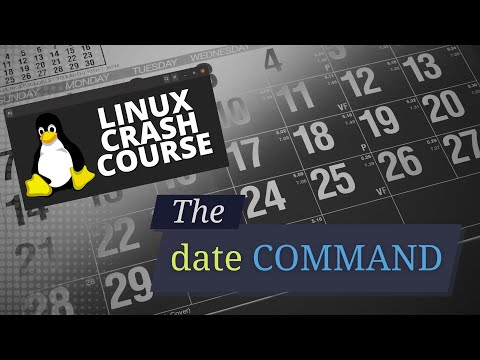
The rsync command is kind of like a "swiss army knife" of file transfer utilities. With a wealth of options available, it’s easily one of the best methods of moving files around. In this video, Jay goes over the finer points of the rsync command, with an emphasis on the most important options you should know for day-to-day usage.
Thanks to Akamai for sponsoring today’s video! Check out their connected cloud platform for your own awesome Linux server! https://learnlinux.link/akamai
LEARN LINUX TV – YOUR HOME FOR LINUX-RELATED FUN AND LEARNING!
— Support Linux Learning (commission earned) —
• Receive a 5% discount on an LPI exam voucher ➜ https://learnlinux.link/lpi-voucher
• Affiliate store for Linux compatible hardware/accessories ➜ https://learnlinux.link/amazon
• Become a channel member here on YouTube ➜ https://learnlinux.link/join
• Become a Patron on Patreon ➜ https://learnlinux.link/patron
• Mastering Ubuntu Server 4th Edition ➜ http://ubuntuserverbook.com
• Set up your own cloud server with Akamai’s Connected Cloud ➜ https://learnlinux.link/akamai
• Awesome KVM for your Homelab ➜ https://learnlinux.link/tinypilot
— Individual Sections —
00:00 – Intro
00:54 – Set up your very own Linux server on Akamai’s Connected Cloud (Sponsor)
02:17 – Checking if rsync is available
03:29 – Basic usage of the rsync command
07:40 – Example scenario – backing up a notes folder with rsync
09:15 – Using the –dry-run option with rsync (and why you should)
11:32 – Running rsync without dry run enabled to perform an actual sync
12:57 – rsync is able to work in both directions
14:47 – rsync doesn’t sync deletions by default (and how to make it do it anyway)
18:29 – Using archive mode to preserve metadata while using rsync
19:45 – Adding the -z option to rsync to compress while transferring
20:31 – Removing source files while transferring files with rsync
— Recommended stand-alone videos from Learn Linux TV —
• Essential tweaks for ALL Linux Servers ➜ https://linux.video/all-servers
• How to create a bootable flash drive for installing Linux ➜ https://linux.video/flash-usb
• Installing an operating system for Raspberry Pi ➜ https://linux.video/pi-imager
• How to connect to a Linux server via ssh ➜ https://linux.video/ssh
• Understanding Linux permissions ➜ https://linux.video/perms
• OpenSSH Guide ➜ https://linux.video/ssh-guide
• How to better secure OpenSSH ➜ https://linux.video/secure-ssh
• 10 Linux Terminal Tips and Tricks to Enhance Your Workflow ➜ https://linux.video/cli-tricks-1
• Over 15 Terminal Tricks You Should Learn ➜ https://linux.video/cli-tricks-2
— Recommended Courses from Learn Linux TV —
• Get up to speed with managing an OpenStack Cloud ➜ https://linux.video/openstack
• Learn how to write your own Bash Scripts ➜ https://linux.video/bash
• Install, configure, and maintain a Proxmox VE Cluster ➜ https://linux.video/pve
• Automate tedious setup jobs by learning Ansible ➜ https://linux.video/ansible
• Learn how to exit vim (and use it too) ➜ https://linux.video/vim
— Linux-related Podcasts —
• Enterprise Linux Security ➜ https://enterpriselinuxsecurity.show
• The Homelab Show ➜ https://thehomelab.show
— Fun Linux-related Projects —
• Run your own Gitlab CE Server ➜ https://linux.video/gitlab
• Build a Kubernetes Cluster on Proxmox ➜ https://linux.video/pve-k8s
• Set up your own Nextcloud Server ➜ https://linux.video/nextcloud
— Official Learn Linux TV Sites —
• Main site ➜ https://www.learnlinux.tv
• Community ➜ https://community.learnlinux.tv
— FAQ —
• Which distro do I use? ➜ https://learnlinux.link/mydistro
• My recording gear (commissions earned) ➜ https://learnlinux.link/recording-stuff
— Content Ethics —
• The following article covers the rules and guidelines Learn Linux TV abides by ➜ https://www.learnlinux.tv/content-ethics
Disclaimer:
LearnLinuxTV produces technical content that will hopefully be helpful to you and teach you something new. However, this content is provided without any warranty (expressed or implied). LearnLinuxTV is not responsible for any damages that may arise from any use of the content and information that’s being provided. The viewer is expected to follow best judgement and to make his/her/their best decisions while working with production or non-production software, systems and hardware.
#Linux #learnlinux #linuxcommands











